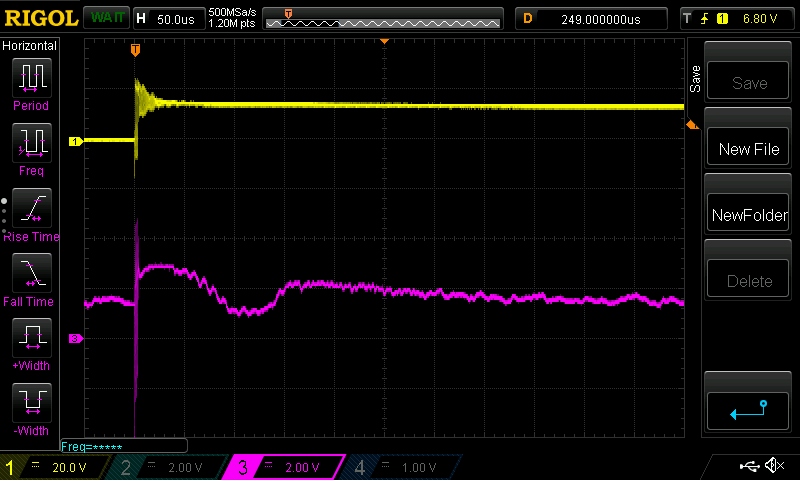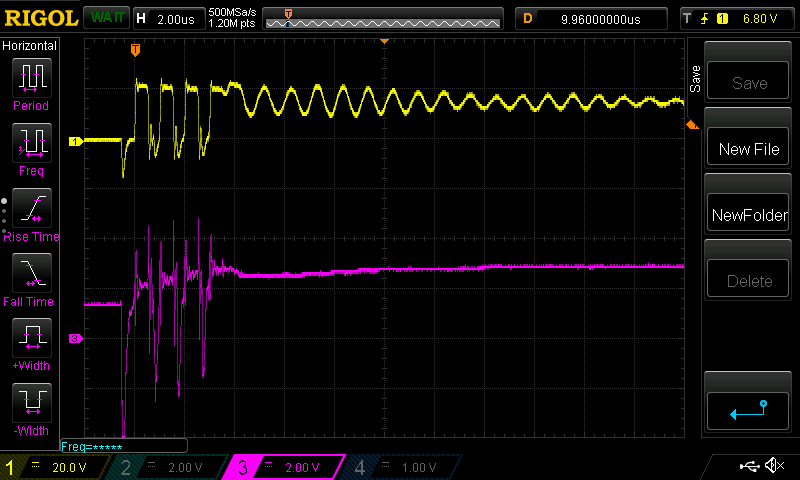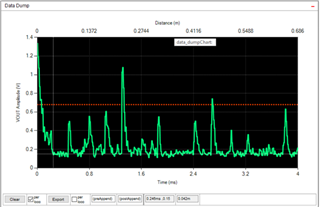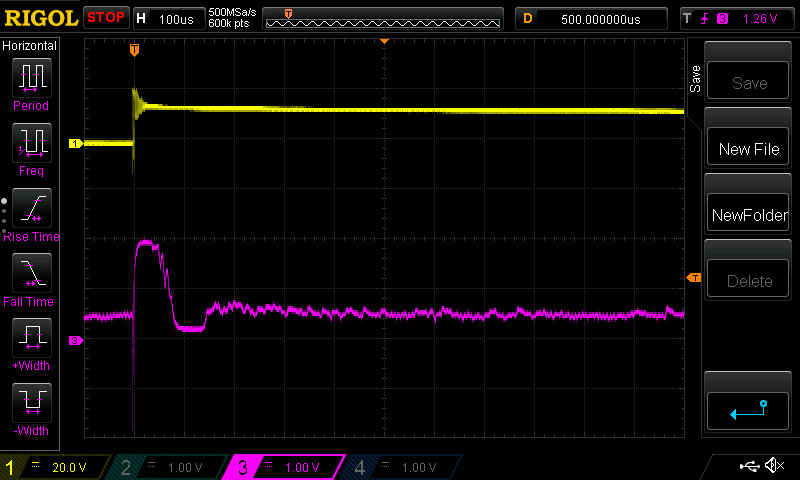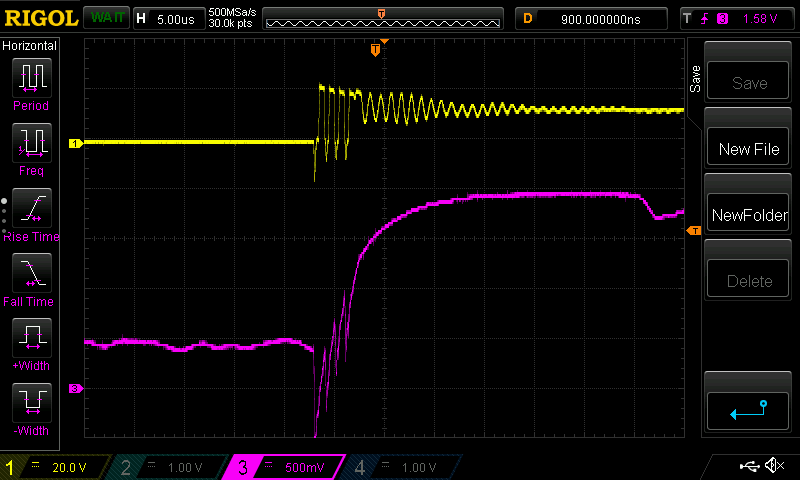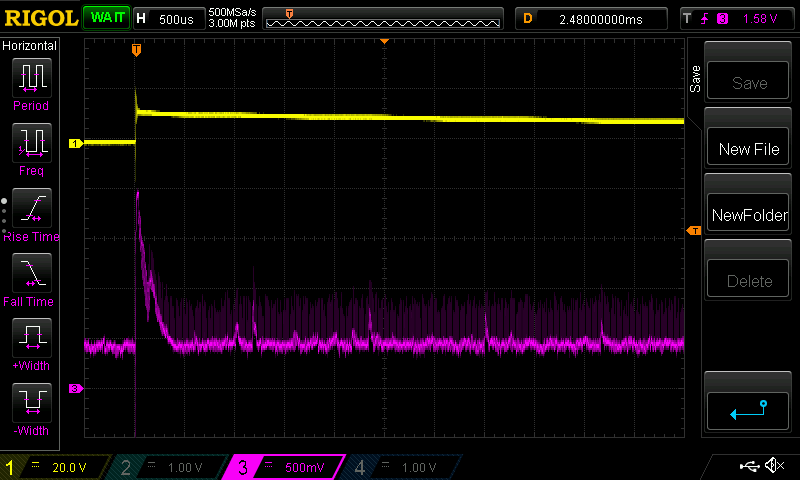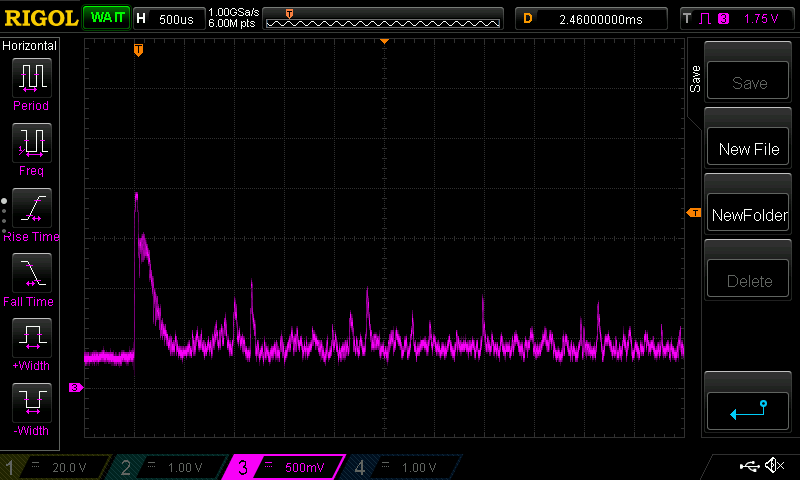Dear TI,
I've got a TUSS4470 on our custom board and connected to a PZT and we're trying to measure fluid level. The container this is attached to currently is metallic. I was wondering if you could take a look at my waveform to see if you can think of an approach to clean up or get a cleaner signal out. I can see 2 bumps which could be used to calculate the fluid level in this case but I'd like to see nice spike echo responses.
Here is my configuration setup:
Add Value
0x10 0x5F
0x11 0x00
0x12 0x1C
0x13 0x02
0x14 0x00
0x16 0x5F
0x17 0x13
0x18 0x54
0x1A 0x04
0x1B 0x02
